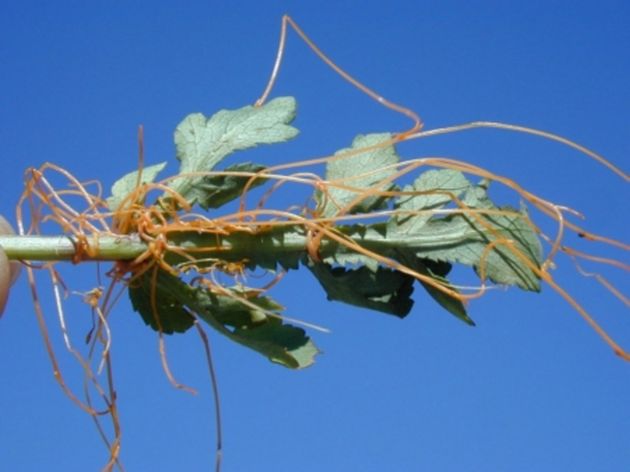Plant Passes Genes Sans Sex

The software of life used to seem sacred. Lowly bacteria share genes willy nilly, but plants and animals were thought to pass them along only by having sex.
A new study, however, found two instances of sex-free gene swapping from a parasitic flower to weeds on which it clings.
The parasite, called a dodder, is a green or yellowish vine that looks a bit like cooked spaghetti, says biologist Colin Purrington of Swarthmore College in Pennsylvania. Dodders are closely related to morning glories, but as parasites they rely completely on their host for water and nutrients.
Dodders are commonly called both angel's hair and devil's hair, according to Purrington, who was not involved in the new research. The dodder is on the USDA's Top Ten Weeds list, he says, "in part because there is no reliable way to kill it short of using a flame-thrower or acid sprays."
In weeds called Plantago, Indiana University biologist Jeff Mower and his colleagues found genes that had come from dodders.
The exchange of vital information occurred within the past few million years -- relatively recent in an evolutionary sense -- Mower and his colleagues report in the Nov. 18 issue of the journal Nature.
The gene insertion was less than voluntary, befitting the devilish nature of the dodder. Cells of the dodder penetrate the cells of the host, "making it possible for errant parasite DNA to sidestep several obstacles on its way into a host cell," the researchers write.
Sign up for the Live Science daily newsletter now
Get the world’s most fascinating discoveries delivered straight to your inbox.
The discovery compliments a similar finding earlier this year of "horizontal gene transfer" between the largest flower in the world, which is also a parasite, and its host grape vines.
Scientists don't know the extent or pervasiveness of all this sexless hereditary freedom.
"Plant parasitism has emerged as the first solid mechanism of horizontal transfer in plants," Mower said. "Other mechanisms also are likely to be important but, as of yet, they remain in the realm of speculation."
Robert is an independent health and science journalist and writer based in Phoenix, Arizona. He is a former editor-in-chief of Live Science with over 20 years of experience as a reporter and editor. He has worked on websites such as Space.com and Tom's Guide, and is a contributor on Medium, covering how we age and how to optimize the mind and body through time. He has a journalism degree from Humboldt State University in California.











